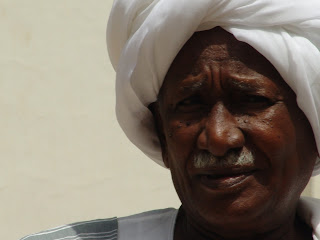In the perception of many a
South Sudanese nationalist the event of South Sudan’s independence is the
culmination of a reconstructed history of struggle that stretches back to
1820-21, the date that marks the beginning of the Turco-Egyptian occupation of
the stretches of land that evolved into the modern Sudan. Of late the Council
of Ministers of the Government of South Sudan officially sanctioned this
reading of the Sudan’s modern history in a resolution that declared the period
1820-2011 the ‘official’ struggle phase for the liberty of South Sudan.
While it is probably
inadvisable to argue against a history freshly crafted by a jubilant state
organisation the parallel between this particular reading of South Sudan’s
struggle and the fantasy of North Sudanese demagogues who claim a North
divorced of any organic link to the South remains instructive. Between the two
many a brave attempt to bridge the North-South rift as it were litter the
hygienic history of liberation or purge whatever way one may choose to
interpret it.
In a sense, the North-South
divorce, now an exercise in state-fashioning with international recognition and
support, remains haunted by undead ghosts of an (im)possible unity, one that
finds root in the struggles of the
Sudanese labour movement, the joint quest for democracy and social justice,
rather than in the quagmires of ‘cultural’ difference. What survives today of
this (im)possible unity are the common challenges facing two states born out of
the fatigue of constructing one. In that regard Sudan’s partition is but
another symptom of the twin enduring characteristics of the Sudanese state, its
overt ambition and its crippling weakness[1].
Both the National Congress
Party (NCP), ruling the rump Republic of Sudan (RoS) and the Sudan People’s
Liberation Army/ Movement (SPLA/M), ruling the emergent Republic of South Sudan
(RoSS), set out to cement ‘unity’ on a new basis. The National Islamic Front
(NIF) which evolved to become the ruling NCP wished for a nation-state that
satisfies the model of the European colonizer, a homogenous whole weld together
by Islam and the dominant culture of the riverain Sudanese heartland. The SPLM
on the other hand propagated for a ‘New Sudan’, in the words of its late
chairman John Garang back in 1989 “a socio-political mutation” where the power
of the central government in Khartoum is restructured. When asked how this
restructuring should take place Garang responded “As a socio-political mutation
you cannot really delineate it by saying one, two three. But we are talking
about a new reality in which the localisms and the parochialisms – Sudan is
composed of more than 150 different nationalities speaking different languages
with various religions – are transcended by a commonality to which we all pay
our allegiance and our patriotism. That commonality has never been achieved in
our situation”.[2]
The structure of Garang’s quest essentially mirrored that of the NIF. While
Garang invested in an abstract Sudanese nationalism yet to blossom the NIF
reinvented Sudan’s Islam and riverain culture as driving forces of an
aggressive chauvinism. The one, two, three of both parties was war.
Military exhaustion and
international pressure eventually led the two contenders to surrender their
ambitions to the rationale of division. The Comprehensive Peace Agreement (CPA)
signed in 2005 conditioned unity with attractiveness. Expectedly, the Southern
Sudanese voted in January 2011 overwhelmingly for secession. As far back as 1976
the NIF had contemplated the secession of South Sudan as a necessary surgical
correction to allow for the establishment of an Islamic order[3]. For the SPLA/M the
reversal from unity on a new basis to secession was almost natural. Guided by
hindsight a ruthless cynic could even claim that Garang’s pedagogy of national unity
was but a convenient bypass to secure the support of regional powers, foremost
Mengistu’s Ethiopia, against Khartoum.
Secession, however, did not and
could not redeem the Sudanese state, now split into two, of its chronic
liability. Interestingly, it was within their own uncontested territories,
firmly north and south of the almost mythical 1956 border, that the two states
face the greater challenges to their authority, and not in Abyei, a region that
by its exceptional nature proves the rule of the North-South entanglement. The
end of the CPA signalled the resumption of conflict in South Kordofan and the
Blue Nile, two regions of (North) Sudan where the SPLA/M had established itself
as a local force during the 1983-2005 civil war. In the rhetoric of the
northern remnant of the SPLA/M these two regions together with Darfur
constitute the new South in (North) Sudan, the units of a tentative alliance
joining Sudan’s marginalized of African extraction against the Arabs of the
riverain heartland. In South Sudan, dissatisfaction with the division of spoils
provided the material for a set of rebel movements even before the July
declaration of independence. Instances of armed resistance against the
authority of the new republic go today by the names of ‘tribal warfare’ and
‘cattle-rustling’. These, notably, are more or less the same terms that
Khartoum used to devaluate the threat it continues to face in Darfur. President
Bashir’s famous claim in that respect is that the war in Darfur started with
the insignificant event of a camel robbery.




No comments:
Post a Comment